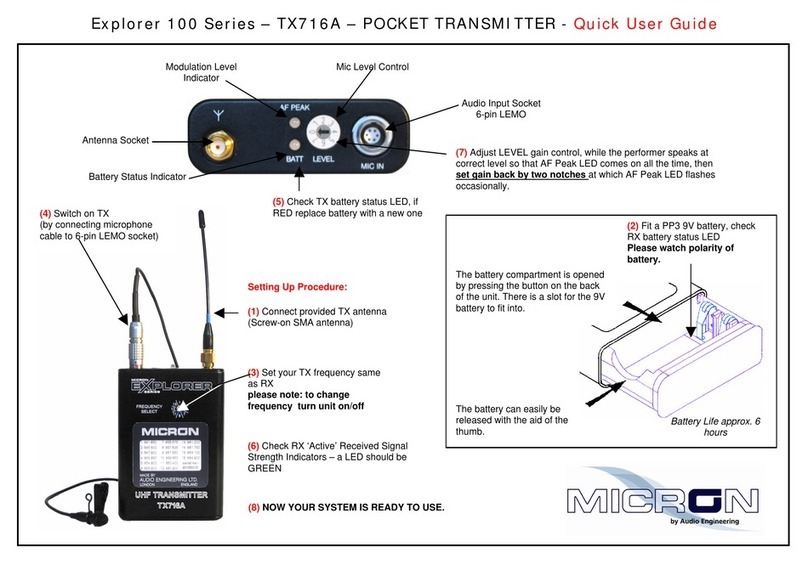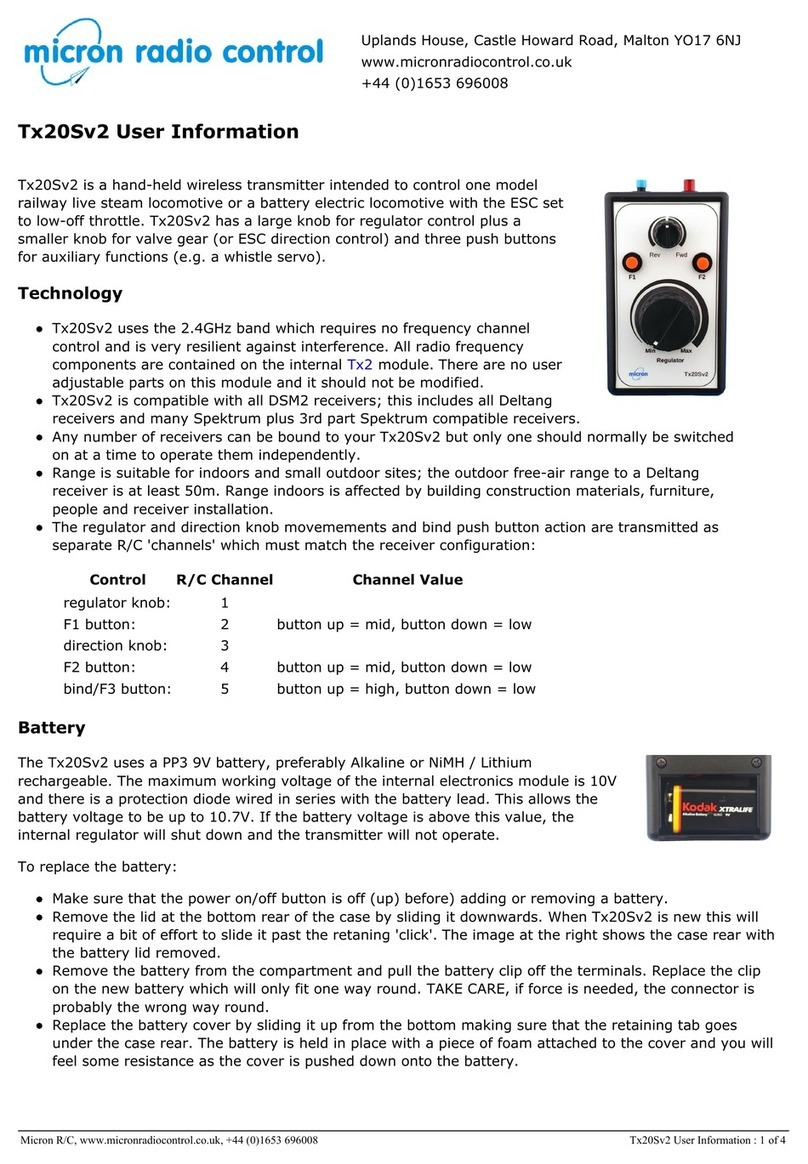
General Description
file: tx700ins2master.doc Page 7
The Micron TX700’s sophisticated design is based around a low-noise VCO, with digitally controlled PLL circuit,
producing the highest possible quality of transmitted signal. The lightweight, yet rugged aluminium extrusion case
provides strength and durability, and is designed to withstand the heavy demands of location use, while being
comfortable to wear - ideal for situations where concealment is important. The unique battery compartment design
enables fast and easy battery replacement.
Adjustment of the audio level is straightforward, with the modulation level control easily accessible through the
TX700’s top panel, where peak-reading LEDs (-10 and 0dB) indicate the audio level, allowing repeatable levels to
be set. The TX700 includes a soft audio limiting circuit, with the threshold user-adjustable to give a wide range of
operation from fully automatic to no limiting action. The advanced design enables the limiter to be used as an
automatic level control, without the pumping effect usually associated with audio AGC, and it can also be used as a
‘distortionless’ emergency limiter to prevent over-modulation.
Additional front-end protection is provided by a bass-cut switch, which may be used to reduce wind noise and
counteract close-microphone effects. The use of dedicated audio input cables enables the transmitter to accept line
and mic level signals, and to power a wide variety of microphone types. The TX700 is equipped with a battery
condition indicator on the top panel, and also transmits an inaudible ‘low battery voltage’ warning signal, which
activates a visual indication on the matching Micron receiver.
The MICRON POCKET TRANSMITTER is available in 4 different models: -
Model Number: Number of Channels: Frequency Range:
TX700.148 100 470-865MHz
TX700.132 100 470-865MHz
TX700.64 64 470-865MHz
TX700.32 32 470-865MHz
This instruction manual can be used for all the above models, detail differences will be indicated where applicable






























